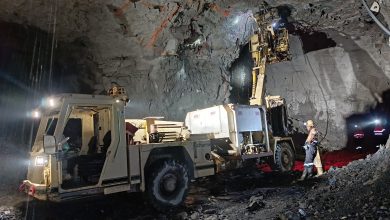
Vanadium Steels: Cutting water use in the built environment
As global awareness of water scarcity and environmental sustainability increases, water savings in the built environment should be prioritised alongside energy and carbon savings to achieve efficient and sustainable building and infrastructure designs to reach net-zero goals.
Buildings consume nearly one-sixth of the total global fresh water for their construction and operational activities. According to the Organisation for Economic Co-operation and Development, global water demand is expected to increase by about 55% by 2050, due to increasing demand from manufacturing (+400%), thermal electricity generation (+140%), and domestic use (+130%). Better water management practices within the construction value chain provides an opportunity to reduce the stress on critical water resources.
Steel, specifically structural steel, is an integral part of buildings as a key structural material. According to the World Steel Association, 52% of globally produced steel goes into the building and infrastructure sector.
Vanadium Steels
However, the steelmaking process is quite water intensive. While the water footprint in construction materials varies geographically, estimates by the World Green Building Council suggest that steel has a water footprint of 78 litres per kilogram of steel manufactured.
A recent study1 by Texas A&M University, in which a comprehensive lifecycle assessment was undertaken to account for the water footprint of steel, has found that the use of high-strengthlow-alloy (HSLA) steel, over mild steel, can help reduce the water footprint of a building structure.
Vanitec, the not-for-profit international global member organisation whose objective it is to promote the use of vanadium-bearing materials, says vanadium is a critical and widely used alloying element and is an essential component in the manufacture of HSLA steel for the construction sector.
The high strength, formability, hardness, good fatigue behavior and toughness, in addition to its resistance to corrosion and weldability, makes vanadium micro-alloyed steels particularly suited for applications in the construction sector, such as buildings, industrial infrastructure, rail infrastructure, energy infrastructure and bridges.”
Moreover, the addition of vanadium helps to make steel lighter resulting in the need for less steel. Through improved material efficiency, vanadium helps reduce the carbon footprint of the construction sector and contributes to global decarbonization efforts.
“As water scarcity and sustainability concerns grow, prioritising water savings in buildings alongside energy and carbon reductions is vital if we are to achieve our global net-zero ambitions,” says John Hilbert, CEO of Vanitec.
The Texas A&M University study showed that water savings make even more of a difference with increasing grade or strength of the micro alloyed high strength steel. The results showed that by using vanadium micro-alloyed high strength steel instead of mild steel, a structural steel framed building could reduce its water footprint by 6%, while a reinforced concrete framed building could reduce its water footprint by 14%.
This highlights the important role of HSLA steel in reducing water footprint of buildings. It also emphasises the need to consider the water footprint, along with the energy and carbon footprints in building design and material choices to achieve net-zero structures.
As the need for more sustainable buildings and infrastructure increases, the role of vanadium in greening the construction sector will help guide the construction industry towards a more sustainable future.






